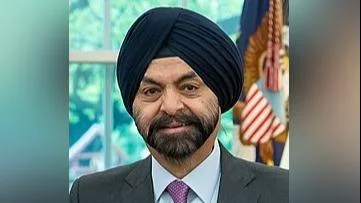India has initiated the world’s largest dam rehabilitation program, addressing the challenges posed by aging infrastructure and changing precipitation patterns. The country, with over 6,000 dams crucial for irrigation, flood protection, and power generation, faces significant risks due to outdated designs and minimal maintenance.
Since 2012, supported by the World Bank, India has upgraded 200 large dams using advanced technology. Each dam presents unique challenges. For example, Karnataka's Krishna Raja Sagara Dam had manually operated gates posing flood risks. Engineer K.G Vijaykumar stated, “This was extremely dangerous,” highlighting the inability to release water quickly during floods. New stainless-steel gates now operate via computers, allowing precise water discharge.
In Uttarakhand’s Ichaari Dam, large boulders from the Tons River caused frequent damage. Assistant engineer Ankit Arya noted logistical difficulties in repairing the dam due to its remote location and harsh conditions. With global expertise, high-strength concrete was applied for the first time in India’s dam sector.
Technological advancements have also addressed other issues. Underwater drones detected cracks in Karnataka’s Krishna Raja Sagara Dam while Tamil Nadu's Servalar Dam used geomembranes to reduce seepage by over 90%.
Safety remains a priority alongside structural improvements. Modern equipment like CCTV systems aids routine checks and surveillance during monsoons. Chief engineer Supriya S. from Kerala emphasized enhanced decision-making capabilities due to real-time data access: “Data of 16 dams is now available in our control room.”
Emergency preparedness is another focus area. Each rehabilitated dam has an Emergency Action Plan developed through consultations with local authorities and communities for coordinated responses to disasters such as floods or earthquakes.
Mapping areas at risk of flooding has revealed extensive potential impacts of dam breaches. Abhishek Kumar from Ichaari Dam realized that a breach could affect regions up to 150 kilometers downstream. This mapping also identified safe evacuation routes; Bhanu Prakash Joshi mentioned discovering alternative routes after realizing their regular bridge would submerge during floods.
The project also supports creating a new pool of dam professionals through postgraduate courses at IIT Roorkee and IISc Bengaluru covering various aspects of dam management including structural design and environmental issues.
Prof N.K Goel from IIT Roorkee remarked on academic institutions' involvement: “For the first time, academic institutions have been roped in to study the challenges...for a dam’s long-term sustainability.”
Improved management and safety measures aim to enhance India's dams' performance for better irrigation, flood control, groundwater recharge, and sustainable river flow.

